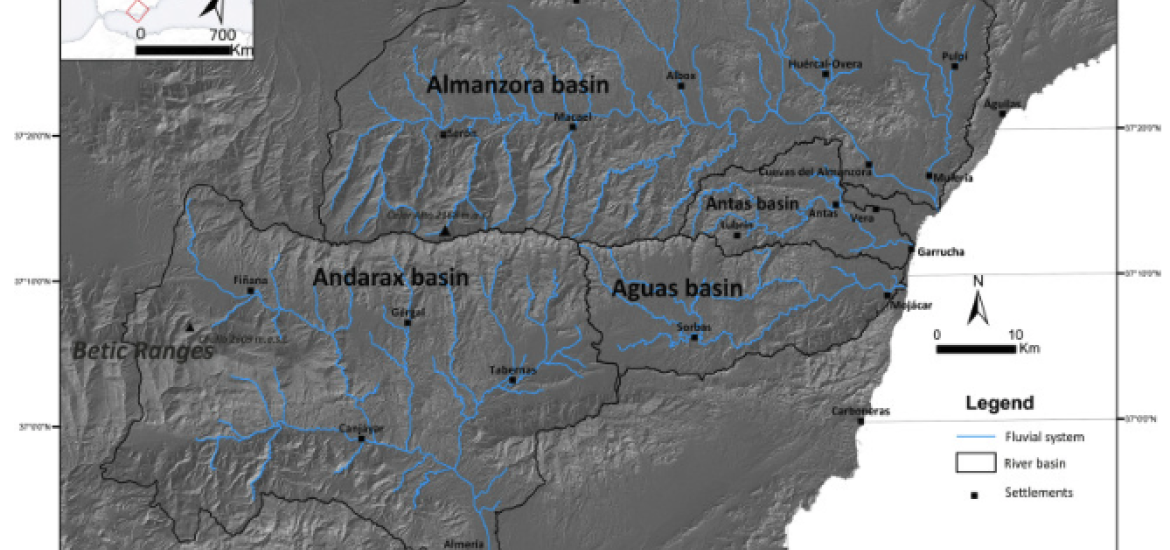- Home
- All News Overview
- Historical Floods In The Southeastern Iberian Peninsula Since The 16th Century: Trends and Regional Analysis of Extreme Flood Events

Historical floods in the southeastern Iberian Peninsula since the 16th century: Trends and regional analysis of extreme flood events
Tuesday, 19 March, 2024
A new paper by Sánchez-García C and Schulte L has been published in Global and Planetary Change on "Historical floods in the southeastern Iberian Peninsula since the 16th century: Trends and regional analysis of extreme flood events".
The authors discuss the significance of studying historical floods to understand flood patterns and anticipate future flood events. They focus on extending the historical flood series for four river basins in the southeastern Iberian Peninsula; the Almanzora, Antas, Aguas and Andarax.
Flood events from these four basins, from 1500 to the present, are classified and analyzed for trends, revealing distinct periods of flood occurrence. A comparison with other river basins in the Iberian Peninsula highlights correlations and differences.
The analysis identifies flood gaps, poor periods, and rich periods, with the last century heavily influenced by reservoir construction. Historical flood occurrences are linked to natural phenomena such as the North Atlantic Oscillation Index (NAOi) and Total Solar Irradiance (TSI). Changes in land use, particularly in tourist areas, also impact flood patterns.
The study arrives at five main conclusions:
"a) The comparison between the historical flood series for the province of Almeria and the flood series for the west-central, northeastern and southeastern basins of the Iberian Peninsula shows a coincidence of five flood periods and a correlation of 15 flood episodes.
b) The last two centuries are marked by anthropogenic factors, mainly a mining boom and an increase in population. Furthermore, since 1850 CE, the appearance of local newspapers has provided a wealth of flood information that contributes to the increase in the index. The last three decades of the 19th century constitute a flood-rich period with the highest number of events across all basins over the last 500 years.
c) From an analysis of all the Iberian Peninsula flood series, two flood gaps and two flood-poor periods have been identified. The flood gaps are in line with negative phases of TSI and NAOi. At global scale, the flood gaps correlate well with the Spörer and Maunder solar minimum. This event highlighted the flood-gap periods recorded in Iberian Peninsula except the Segura basin. The Dalton minimums do correlate with flood-poor periods in the west-central, southeastern and northeastern basins of the Iberian Peninsula.
d) In the last 500 years five flood-rich periods have been identified in the Iberian Peninsula. The flood-rich periods represent more severe hydrological activity in the Iberian Peninsula giving rise to flood events during both, negative and positive phases of NAOi and TSI.
e) The anthropogenic influence is noticeable in the 20th and 21st centuries. The construction of reservoirs and embankments in most of the basins changes the hydrological dynamics and leads to a decrease in flood frequencies and magnitudes of the Vera basin.
f) The increase of low flood events in coastal areas, mostly concentrated in tourism areas such as the mouths of the Antas and Aguas, is another example of the consequences of the tourism boom and uncontrolled construction in the coastal areas of the province of Almeria."